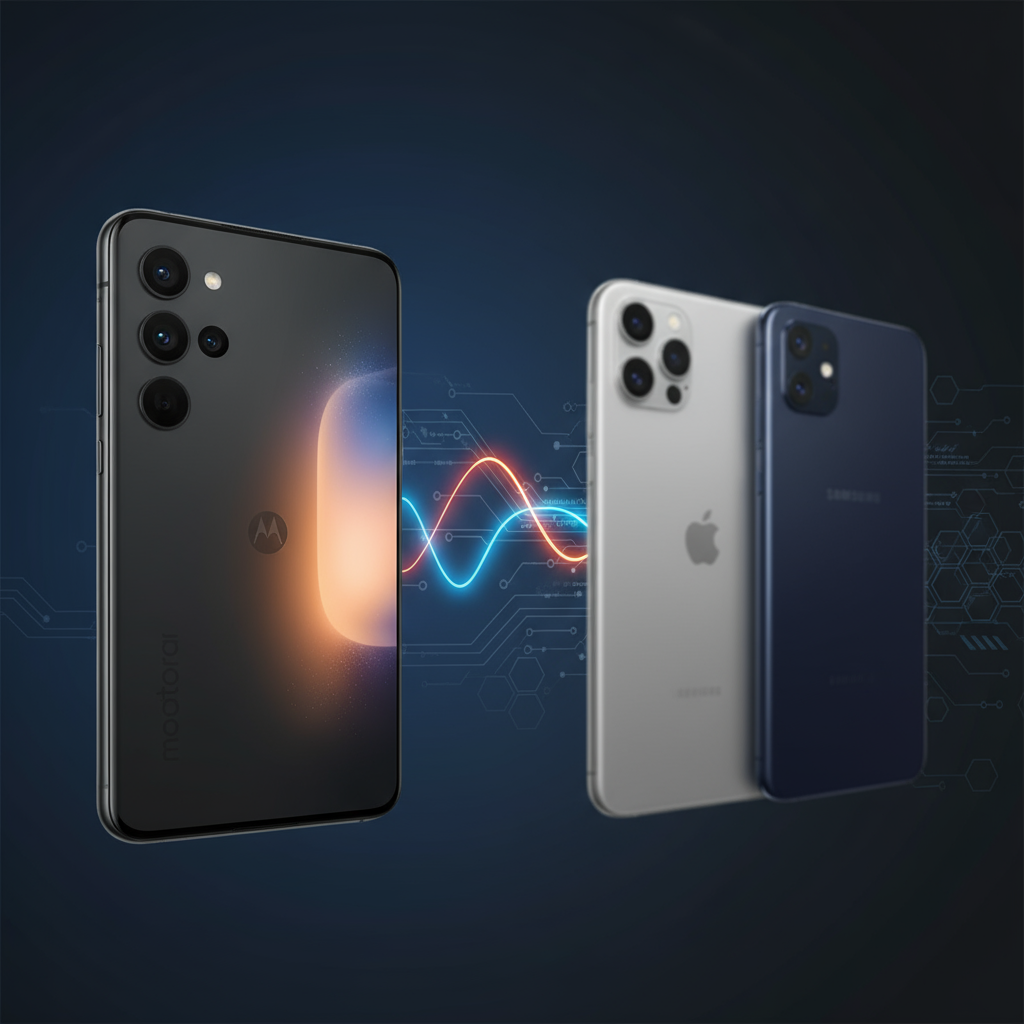Motorola Edge 70: The Slim Contender Ready to Power Through the Giants
The smartphone market is a battleground, dominated by tech titans and their annual flagships. But what if a new contender emerged, not just with dazzling specs, but with a philosophy that directly challenges the perceived compromises of modern design? Enter the Motorola Edge 70, a device rumored to be taking a bold shot at Apple and Samsung, not just with raw power, but with an unexpected weapon: a massive battery packed into an incredibly thin frame. This isn’t just about another phone; it’s about redefining expectations for what a sleek device can achieve.
For years, we’ve been told that a super-slim profile often means sacrificing battery life, or that a large battery necessitates a bulky design. Motorola seems poised to shatter this notion with the Edge 70, potentially offering the best of both worlds. This strategic move could resonate deeply with consumers weary of charging anxieties and the trade-offs often presented by premium devices.
Beyond the Hype: The Promise of Uncompromised Power
The source suggests the Motorola Edge 70 could be “the thinnest phone that doesn’t compromise on power.” This single statement carries significant weight. For too long, the pursuit of razor-thin aesthetics has often led to either smaller batteries or less efficient components. Think of how many times you’ve heard complaints about a flagship phone’s battery barely lasting a full day under moderate use. Apple and Samsung, despite their cutting-edge processors and optimized software, still face these criticisms, especially when users push their devices with gaming, streaming, or extensive photography.
Motorola, in contrast, appears to be aiming for a different narrative. By promising uncompromised power within a thin design, they are directly addressing one of the biggest pain points for modern smartphone users. This isn’t just about having a big number in mAh; it’s about delivering real-world endurance without forcing users to carry a portable charger or constantly seek out power outlets. Imagine getting through a demanding workday, an evening out, and still having juice to spare. This is the promise that can truly differentiate a device in a crowded market.
Challenging the Status Quo: Where Apple and Samsung Fall Short
Apple and Samsung have largely defined the high-end smartphone experience for years. Their devices boast incredible cameras, stunning displays, and powerful chipsets. However, when it comes to battery life in their slimmest flagships, there’s often a lingering sense of “could do better.” Take, for instance, the iPhone Pro Max series or the Samsung Galaxy Ultra models. While they offer substantial batteries, their sheer size often negates the “thin” aesthetic. The standard iPhone and Galaxy models, while thinner, frequently receive feedback about their batteries just barely making it.
This is where Motorola’s strategy becomes acutely relevant. If the Edge 70 truly delivers a massive battery in an ultra-slim form factor, it directly exposes a chink in the armor of its competitors. Consumers might start asking, “Why can’t Apple and Samsung achieve this balance?” It forces a re-evaluation of design priorities and engineering capabilities across the industry. Motorola isn’t just trying to compete; it’s trying to innovate in a space where its rivals have seemingly accepted certain limitations.
The Engineering Marvel: How Could Motorola Achieve This?
The core question then becomes: how will Motorola pull this off? Packing a massive battery into a thin chassis is no small feat of engineering. There are several potential avenues they might be exploring:
- Advanced Battery Technology: This could involve newer battery chemistries that offer higher energy density per unit volume, allowing more power to be stored in a smaller physical footprint. Solid-state batteries or silicon-anode batteries are often discussed as future solutions, perhaps Motorola is closer to implementing something similar at scale.
- Optimized Internal Layout: A major part of thinness and battery size is how components are arranged. Motorola might have developed a revolutionary internal architecture that maximizes space for the battery while still accommodating other essential components like cameras and cooling systems. This could involve stacking components differently or utilizing extremely compact modules.
- Efficient Software and Hardware Integration: Beyond the raw battery size, power optimization is key. Motorola’s engineers will likely have focused heavily on fine-tuning their software to work seamlessly with the new hardware, minimizing background power consumption and maximizing efficiency of the processor and display. This holistic approach ensures every mW is used effectively.
This confluence of advancements would be necessary to deliver on the “no compromise” promise. If successful, it wouldn’t just be a win for Motorola, but a blueprint for future smartphone design across the industry.
A New Benchmark for Modern Smartphones
The Motorola Edge 70 has the potential to be more than just another phone release. By specifically targeting the often-conflicting desires for sleek design and robust battery life, it’s attacking a fundamental trade-off that many consumers reluctantly accept. If Motorola delivers on its promise of a massive battery within an incredibly thin body, it won’t just steal market share; it will set a new benchmark for what’s possible in smartphone engineering.
This move could force Apple and Samsung to rethink their own design philosophies, potentially sparking a new era of battery innovation in the flagship space. For consumers, this means the prospect of a truly uncompromised device – one that looks great, handles everything you throw at it, and lasts all day (and then some). The Motorola Edge 70 isn’t just taking a shot; it’s potentially throwing down the gauntlet and reshaping expectations for the entire smartphone industry.
